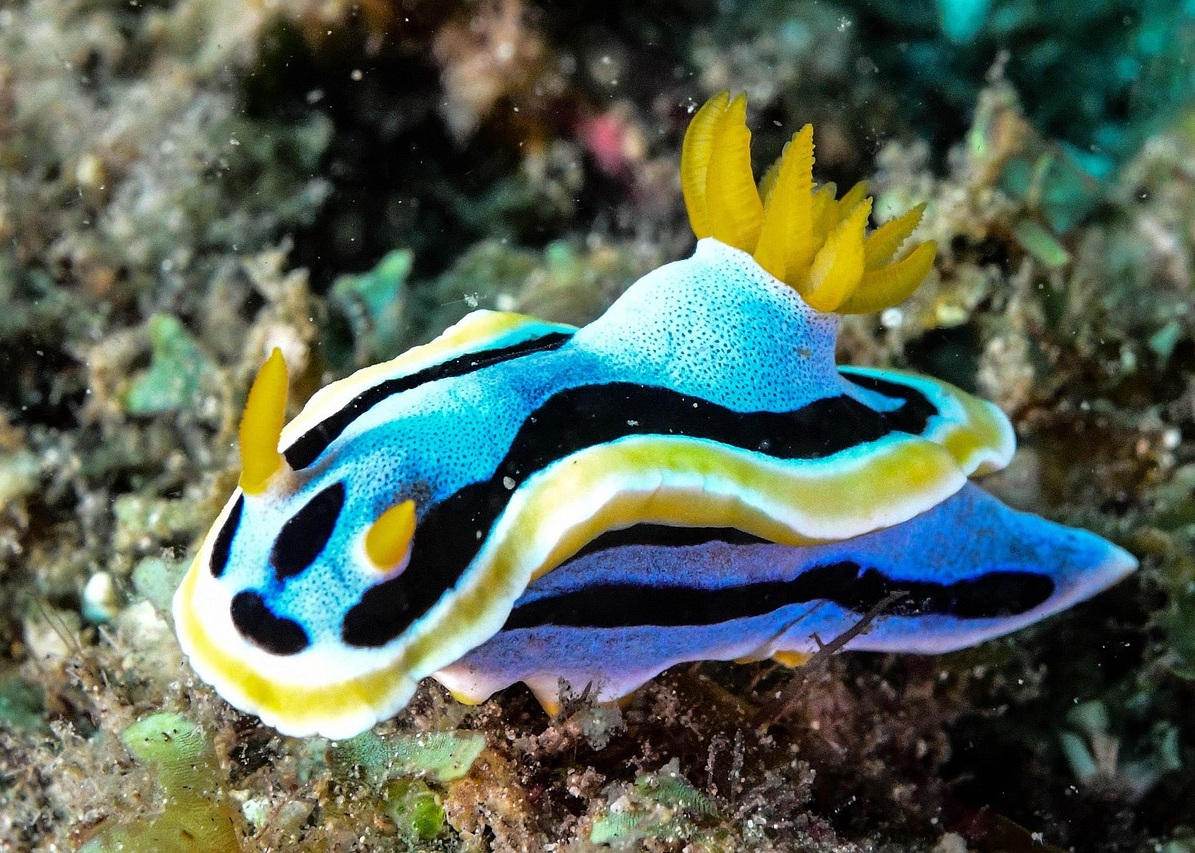
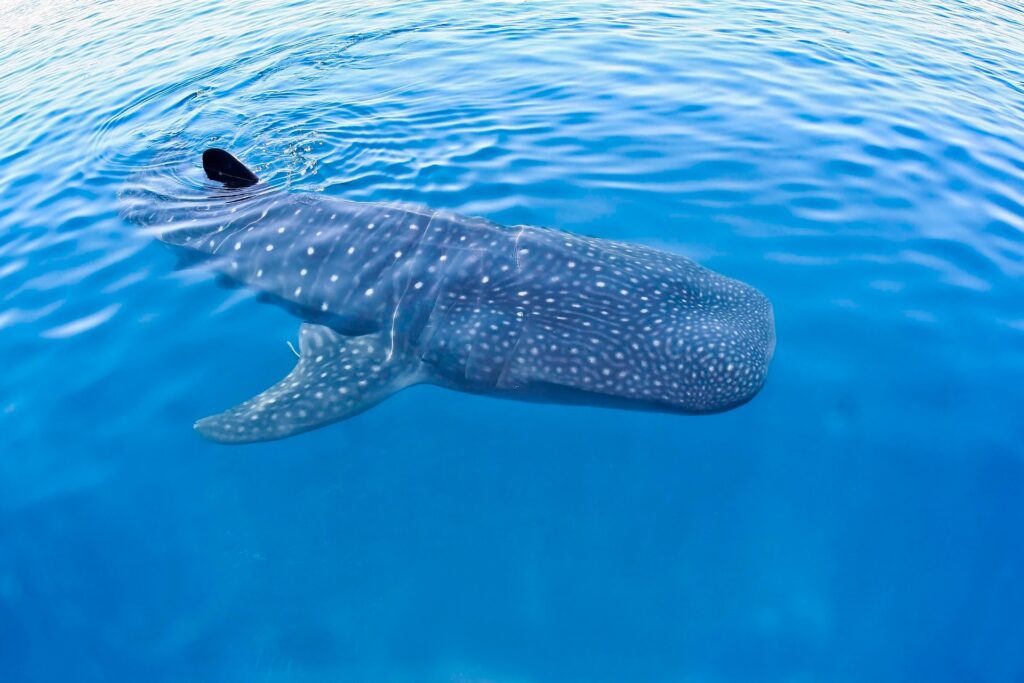
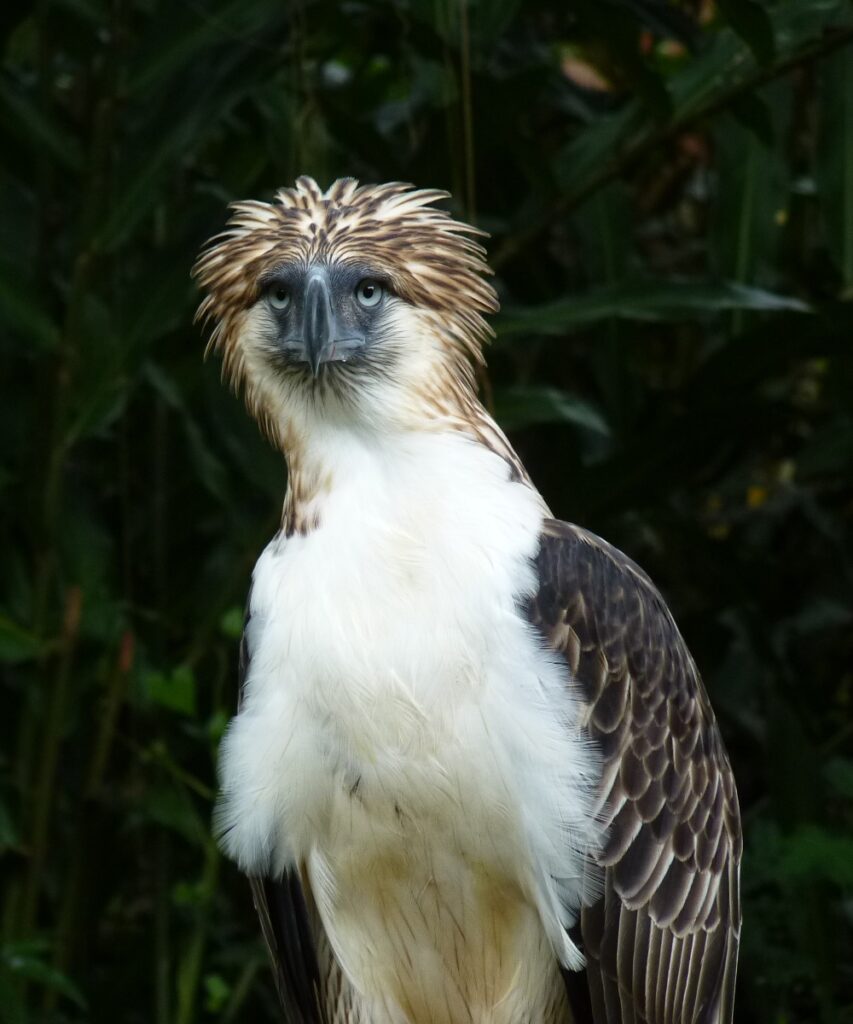
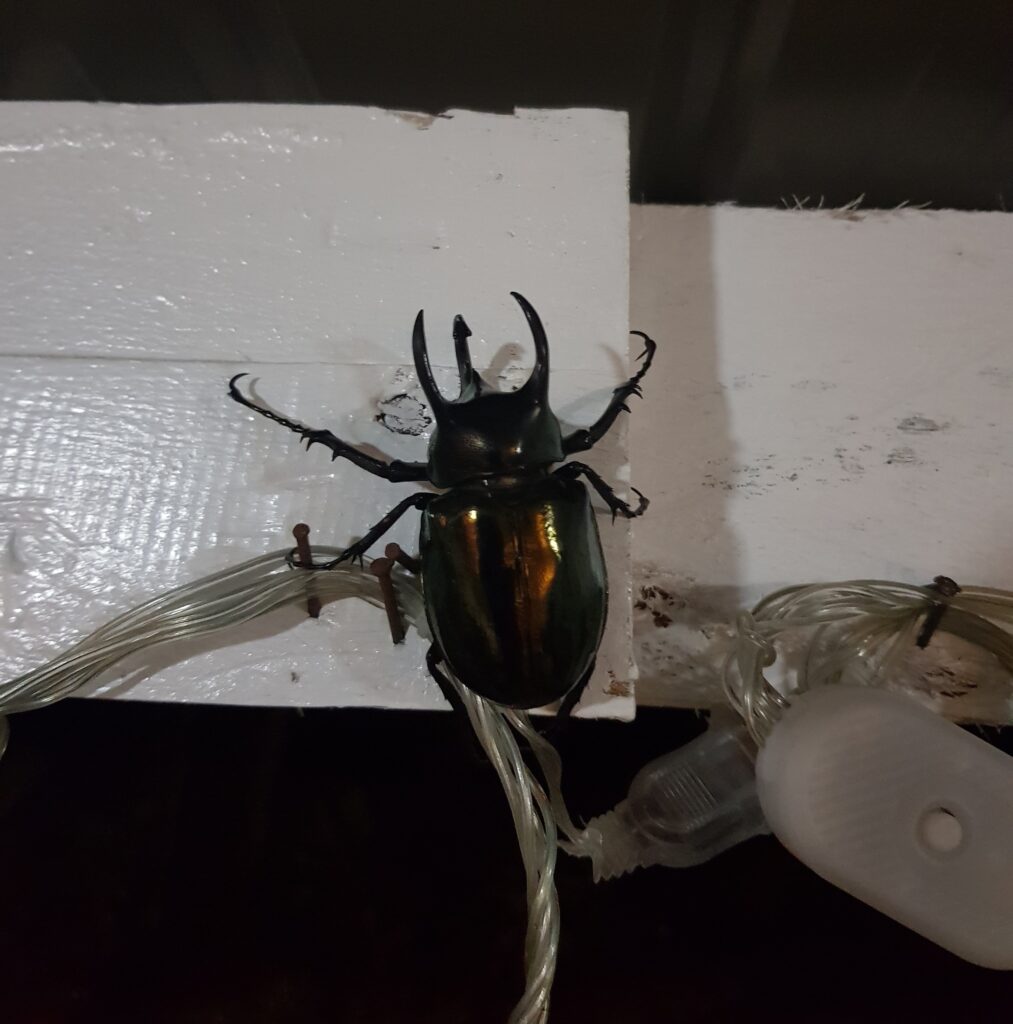
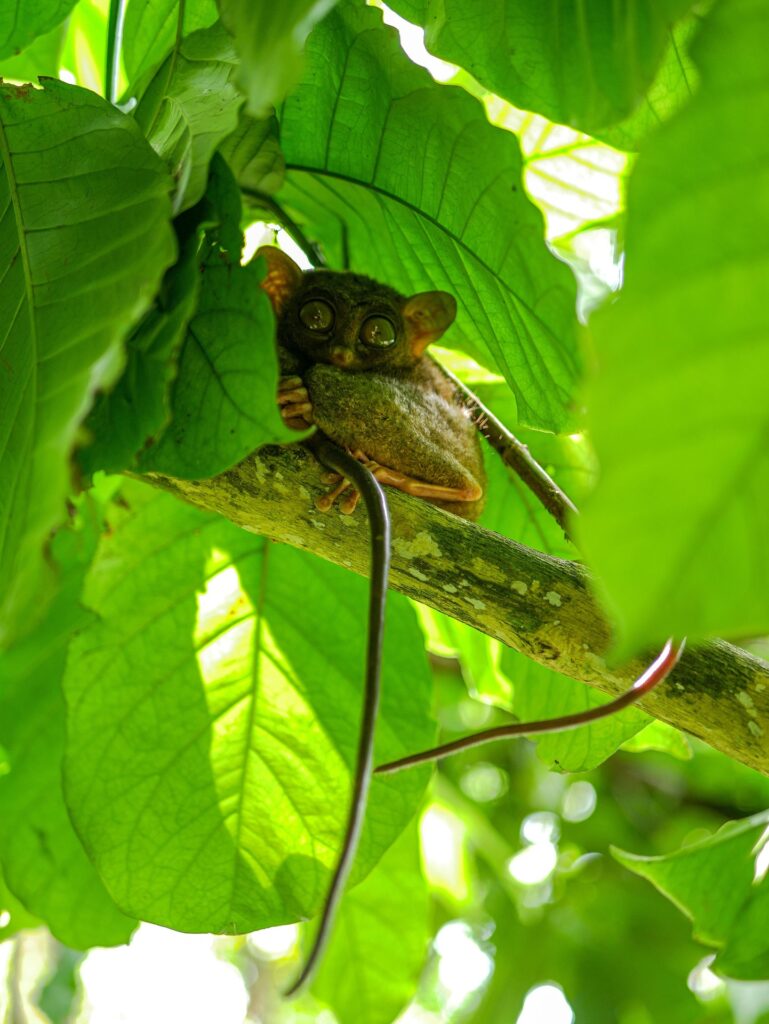
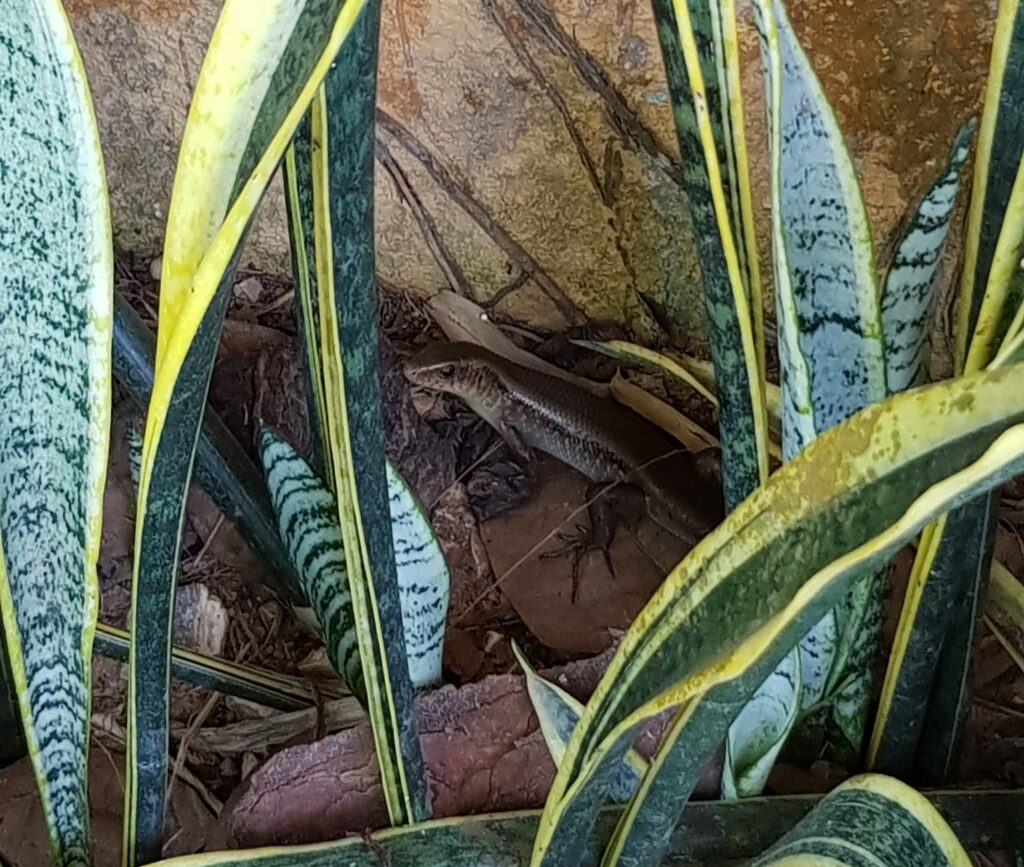
- National Bird: The Philippine Eagle
- Atlas Beetle
- Chromodoris Annae
- Many-striped Skink
- Tarsier
- Whale Shark
Wildlife in the Philippines
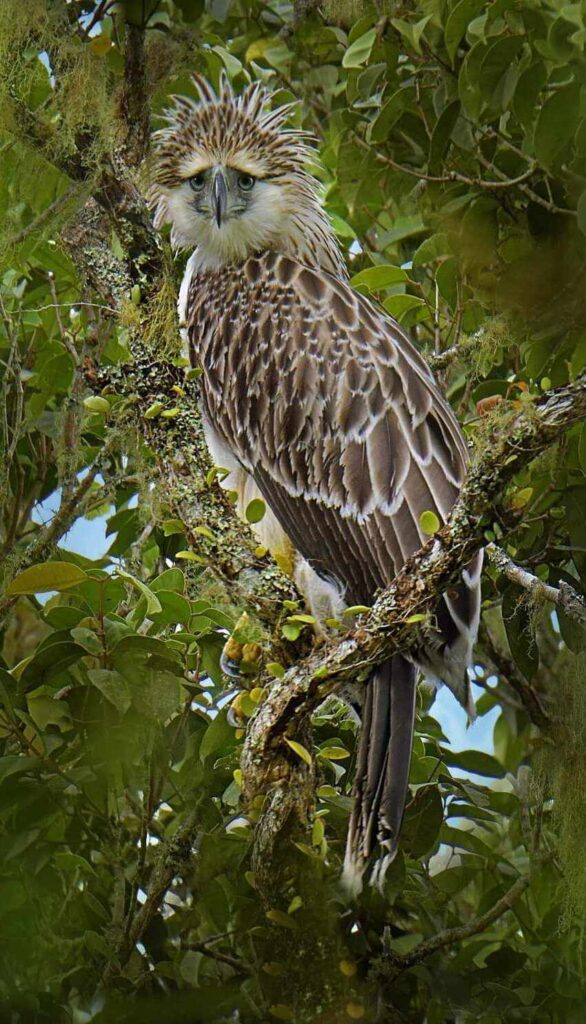
National Bird: The Philippine Eagle
The Philippine Eagle (Pithecophaga jefferyi) is one of the largest, rarest, and most impressive birds of prey in the world. It is found only in the wild in the Philippines – nowhere else on Earth.
Today, it survives only on a few islands with sufficiently preserved rainforests: Mindanao (where most of the birds are), Luzon, Samar, and Leyte. There are probably fewer than 400 wild individuals left. The eagle is threatened not only by deforestation – for roads, settlements, or power lines – but also by occasional targeted killings despite legal protection, often due to trophy hunting or because it is perceived as a threat to livestock. These killings are rare but disastrous given the tiny population. Noise, light pollution, and human presence near nesting sites – whether from hikers, loggers, tourists, or drones – also stress the eagle. Such disturbances can cause nest abandonment, which is especially critical since the eagle usually breeds only once a year. Additionally, these disruptions fragment its habitat, making it harder to hunt prey and find refuge in untouched, densely forested areas with tall trees.
With a wingspan of over two meters, a piercing gaze, and a distinctive feathered crest, it is a truly impressive bird. In 1995, it was officially declared the national bird of the Philippines to raise awareness of conservation and the loss of rainforests.
It was long known as the monkey-eating eagle because it was believed to prey solely on monkeys. Later, it became clear that its diet is much more diverse, including reptiles, birds, and other small animals.
Unfortunately, we did not see it on our trip – it is simply too rare and shy. But this only highlights its importance: it reminds us how precious and worthy of protection nature is, so that such species don’t one day exist only in books or on the internet.
Atlas Beetle
The Atlas beetle (also called the Three-Horned Beetle, Chalcosoma atlas, originally described as Scarabaeus atlas) belongs to the subfamily of rhinoceros beetles. Its name is derived from the Titan Atlas, the giant from Greek mythology who was tasked with holding up the sky.
This large beetle, shimmering in shades from brownish-black to bronze and distinguished by its prominent horns, primarily inhabits tropical rainforests, where it plays an important role in the ecosystem: The larvae decompose organic plant material, contributing to soil fertility. Meanwhile, the adult insect serves as a food source for many animals, supporting ecological balance. It is mostly nocturnal.
Male Atlas beetles can reach lengths of up to twelve centimeters and are easily recognizable by their three characteristic horns. Females are hornless and significantly smaller. Their larvae feed on decaying palm wood, while the adult beetles consume coconut palm flowers and occasionally soft plant parts, such as young shoots.

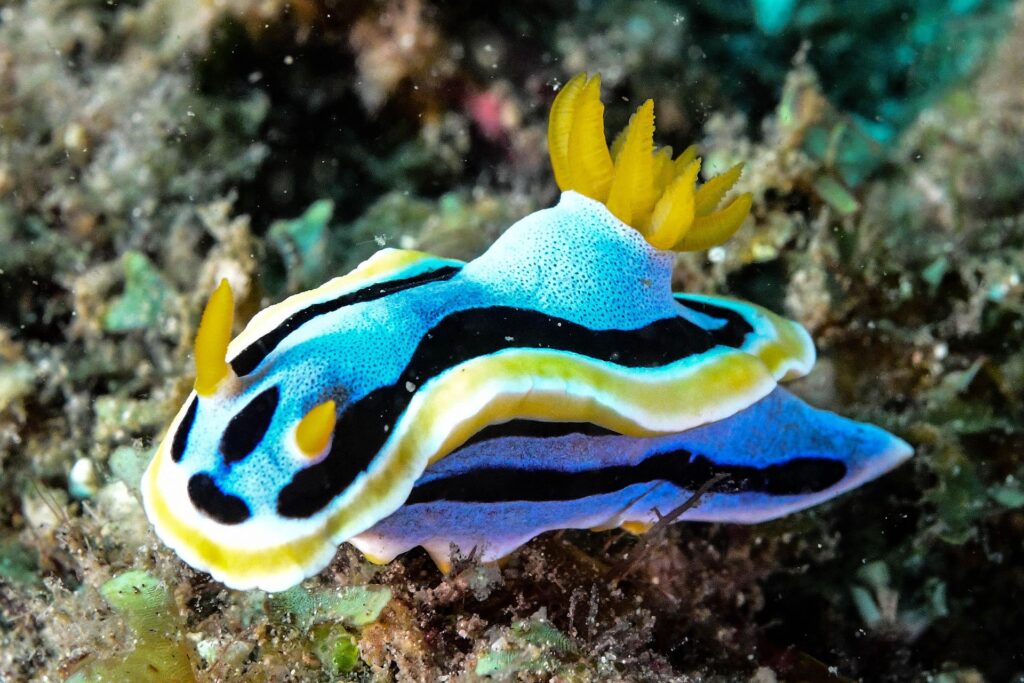
Chromodoris Annae
You don’t need big fish to inspire awe. Sometimes a five-centimeter sea slug is enough – especially when it looks like Chromodoris annae: a brightly blue nudibranch with an orange edge and black stripes – barely bigger than a finger, yet a true eye-catcher. It looks like a work of art.
We discovered it while diving off the coast of Pintuyan. These small sea slugs live well hidden among corals and sponges, their vibrant colors signaling: “I’m not for eating.” Indeed, they contain toxic substances from their diet that protect them from predators.
The Philippines are part of the so-called Coral Triangle, a vast marine area in the tropical Indo-Pacific. It is considered the most diverse marine ecosystem on Earth. The Philippines lie right in the heart of this biological hotspot.
What makes this area so special? Over 75% of all known coral species and about 2,000 different reef fish species live here. Sea turtles, sharks, manta rays, whale sharks, and countless smaller creatures like seahorses and shrimp also call this place home. Chromodoris annae is just one of many fascinating creatures you can encounter here.
The Coral Triangle is fragile. Coral bleaching, overfishing, blast fishing with explosives, and plastic pollution threaten its delicate balance. They can destroy entire habitats. That’s why it’s so important to protect this region and experience it with care.
Many-striped Skink
Sometimes the extraordinary is found close to the ground—in the small, seemingly ordinary things. Among plants, especially in gardens, a small, shiny shadow often darted by. As is often the case, we heard the animal before we saw it. And even then, only briefly—it can sprint away in a flash and hide under stones, leaves, or in the soil, even squeezing into narrow crevices.
What at first glance looks like an ordinary lizard is actually a many-striped skink (Eutropis multifasciata). Skinks belong to a specific family within the lizards. Characteristic is their relatively small head, which flows seamlessly into the smooth, glossy body. This nimble reptile is native to the Philippines. It feeds on insects and small invertebrates – and is itself prey for birds and snakes.


Tarsier
In the dense forests of the Philippines lives a nocturnal creature that seems like it came straight out of a fairy tale: the Philippine tarsier (Carlito syrichta). With its huge, almost glassy eyes – each as large as its own brain – and a flexible head that can turn almost completely like an owl’s, it is perfectly adapted to life in the dark.
The tarsier is tiny, fitting easily into the palm of a hand. It was once classified as a prosimian (a type of “half-ape”), but this classification is outdated: in fact, the tarsier is more closely related to monkeys. Thanks to its long hind legs, it can jump with remarkable precision from branch to branch. It hunts insects, small reptiles, and sometimes even birds. Tarsiers are the only primates that completely forgo plant-based food, making them strict carnivores.
As special as it is, its habitat is also fragile. Deforestation, light pollution, noise, and careless tourism disrupt the nighttime quiet that this animal needs to survive. Even the smallest changes to its environment can disturb, displace, or permanently endanger it.
Whale Shark
The whale shark (Rhincodon typus) is the largest fish in the world, capable of growing over twelve meters long, yet completely harmless. The whale shark is named for its enormous size and gentle, whale-like feeding behavior, but biologically, it is a true shark – a kind of “whale-like shark”. It filters plankton and tiny marine creatures from the water and moves with an impressive calmness, similar to a dugong. In the Philippines, there are places where, with a bit of luck, you can encounter these gentle giants – whale sharks and dugongs – in the wild.
We saw whale sharks several times while snorkeling off the coast of Pintuyan – no tours, no feeding, no crowds. Just nature as it should be: real and untouched. These undisturbed encounters were a gift. At the same time, they served as a quiet reminder of how important it is to protect the oceans, so that such experiences remain possible in the future.
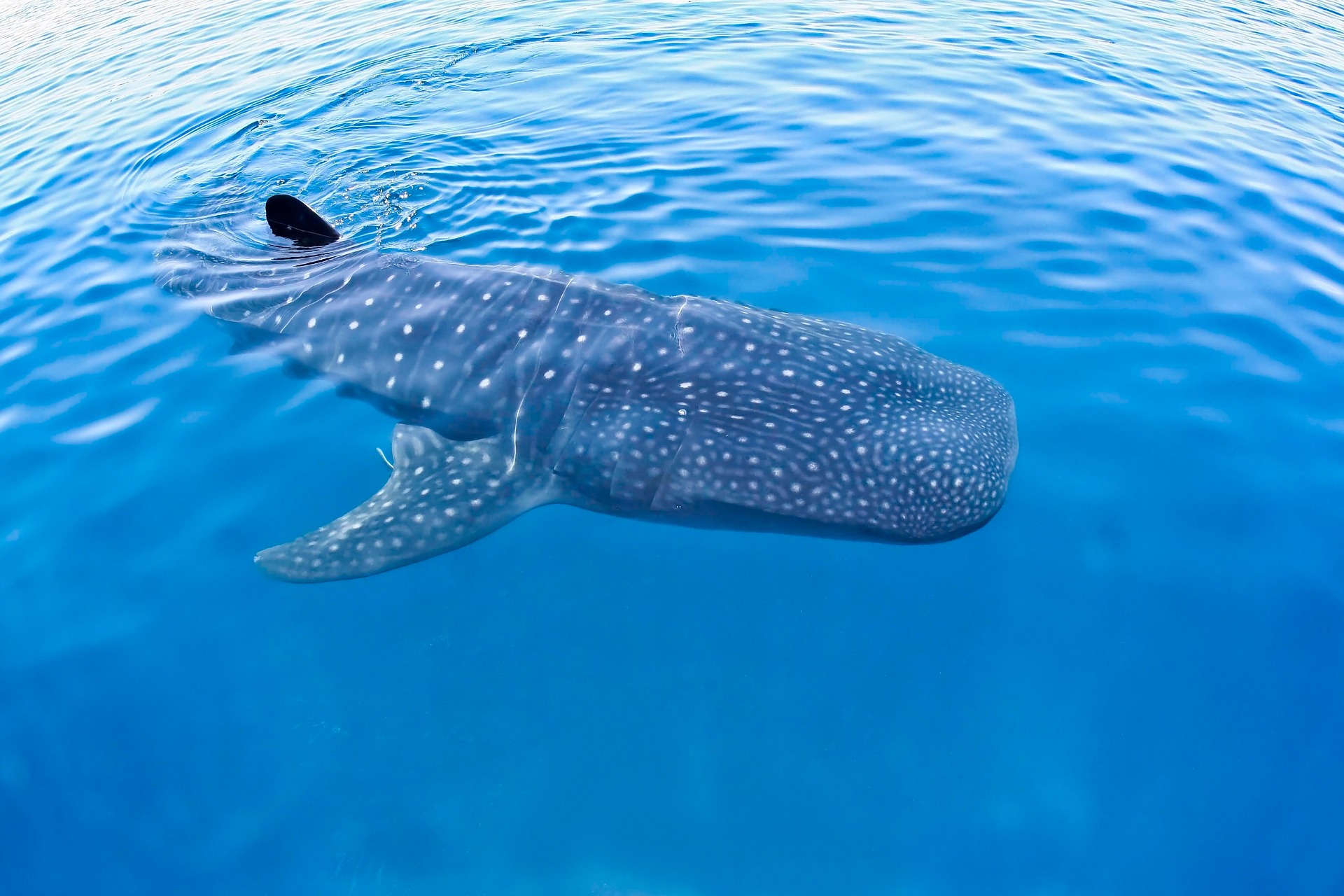




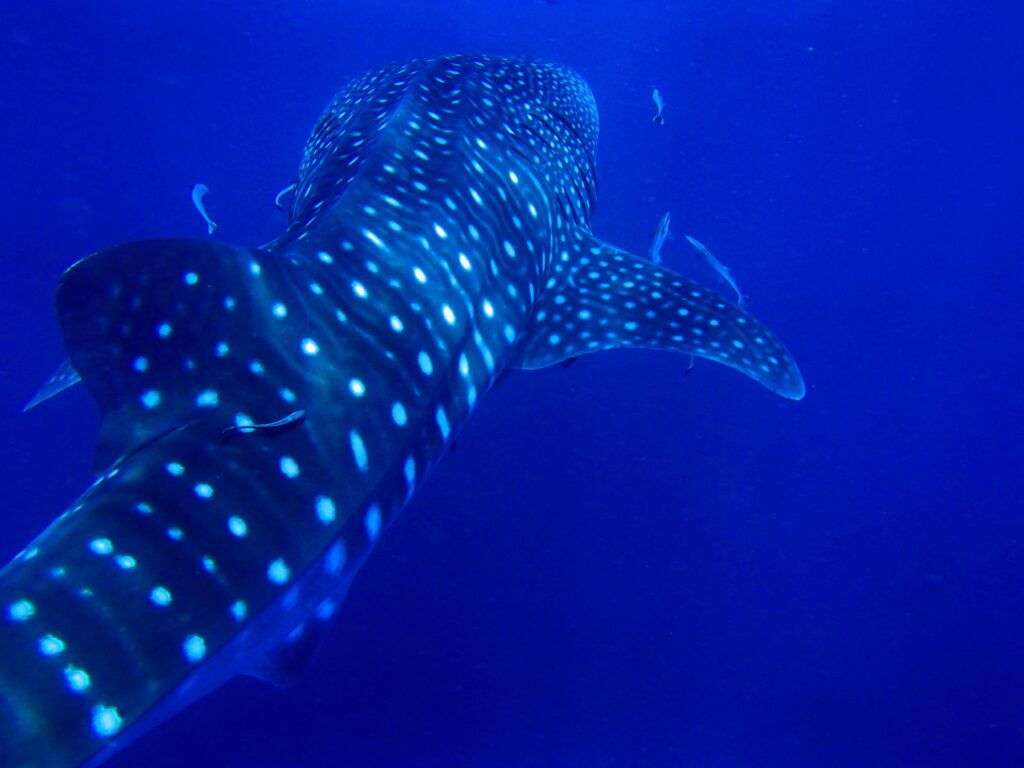
Leave a Reply